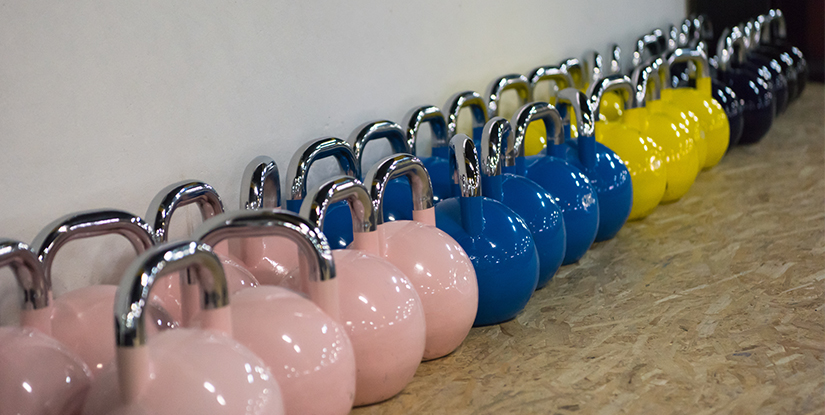Honestly, the first time I heard about the kettlebell pentathlon, I figured it was some next-level, elite-only type of thing. Like, “cool for those beasts on YouTube—not for me.”
But then it kept popping up. Reddit threads, gym convos, random YouTube recs—you name it. So eventually, I got curious enough to try it myself.
What were the five events? Why did everyone talk like it was the ultimate test?
And yeah, it kicked my ass at first. But afterward, I started figuring things out. So if you’re confused like I was, or just low-key interested, here’s everything I wish someone told me before I jumped in.
What I Thought Kettlebell Pentathlon Was vs. What It Really Is
At first, I assumed it was just five random kettlebell exercises slammed together to make you sweat. Turns out, it’s way more structured—and smarter—than that. Each lift has a purpose, and it hits different skills: power, endurance, timing, and technique. The kettlebell pentathlon is a challenging kettlebell sport event consisting of five exercises: Clean, Clean & Press, Jerk, Half Snatch, and Push Press, each performed for six minutes with a five-minute rest between sets.
The Five Events
The kettlebell pentathlon has a set order, and each move challenges you in a unique way:
- Clean – This warms you up and builds grip endurance fast.
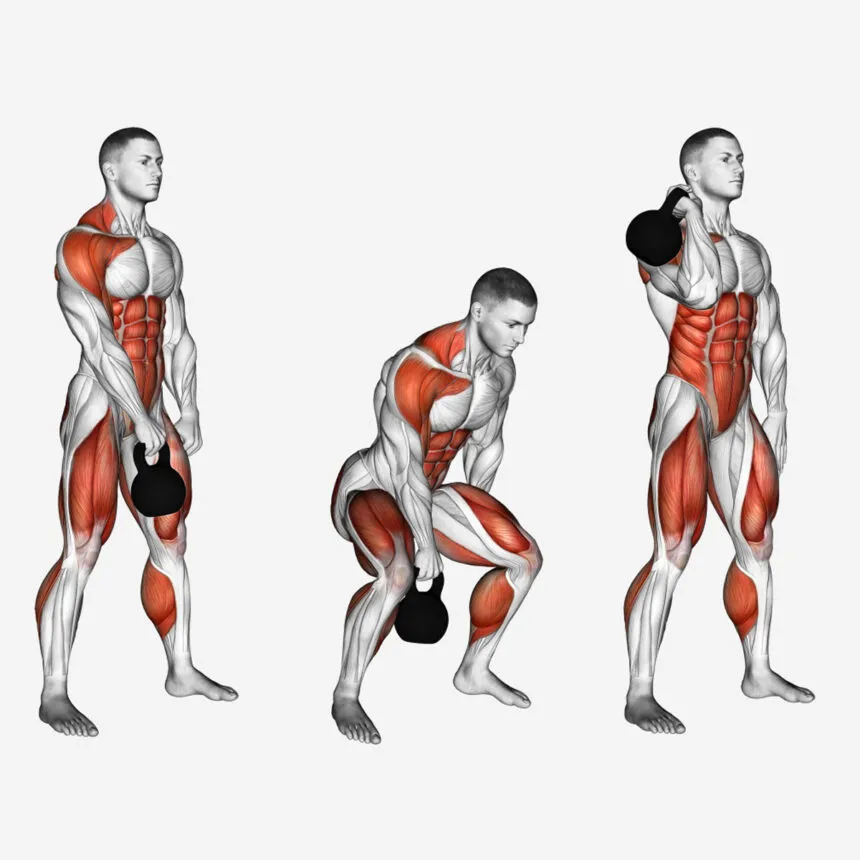
This one’s all about control and grip. I used to bash my wrists and burn out my forearms—until I figured out better form. I explain exactly what I changed in Kettlebell Clean: How I Fixed My Form & Saved My Wrist.
- Long Cycle Press – Pressing strength, but with pacing.
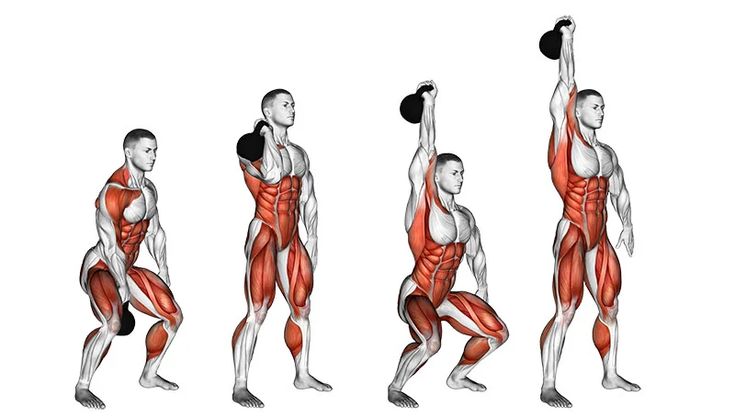
It sounds simple: clean the bell, then press it. But when fatigue kicks in, things fall apart fast. Here’s how I dialed in technique and breathing in Kettlebell Clean and Press: How to Master.
- Jerk – All about timing and explosive leg drive.
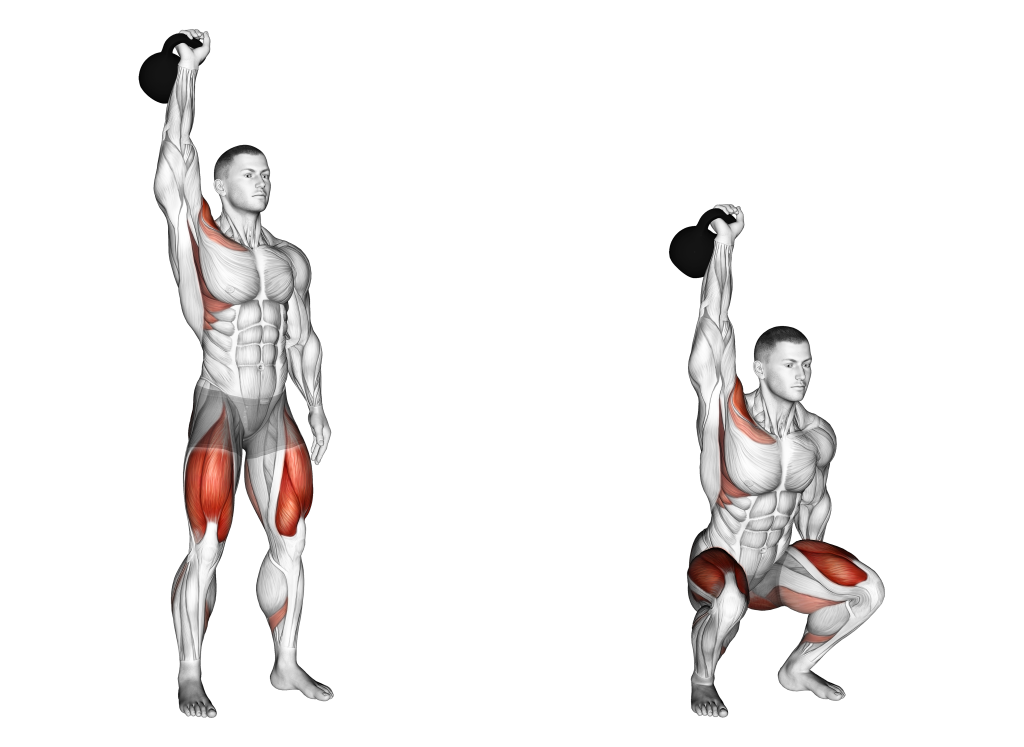
This one’s trickier than it looks—timing, posture, and that second dip all matter. I was messing up the basics and didn’t realize it until I started feeling weird pressure in my back. I break it down in Kettlebell Jerk: How I Fixed Pain, Pressure & My Form.
- Half Snatch – Heart rate climbs here—big pull, big breath.
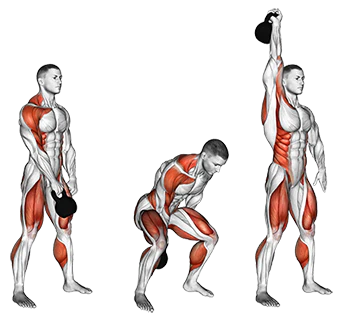
It kinda feels like a snatch, just without the full drop—so it’s way smoother and doesn’t beat up your shoulder as much. Took me a bit to dial in the timing, but once it clicked, it became one of my favorites. I break it all down in Kettlebell Half Snatch: Form, Fixes, and Key Benefits if you’re trying to clean it up too.
- Push Press – A high-rep finisher that tests grit.
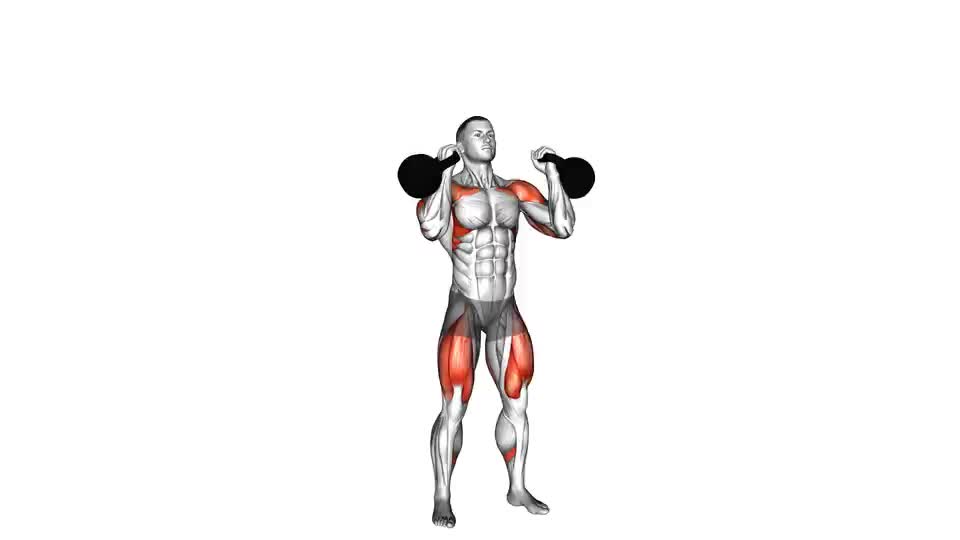
This is the burnout round. It’s fast-paced, leg-driven, and surprisingly spicy on the shoulders. If you want tips and muscle breakdowns, check out Kettlebell Push Press: Form Tips, Muscles Worked & Benefits.
Each movement is performed on one side, with a switch at the halfway mark.
How the Format Works
Here’s what threw me off at first: you’re not just doing reps for time, you’re also working within set time caps—usually 6 minutes per event, with 1 minute rest in between. You only switch hands once per event, so strategy matters. That switch has to be smooth or you’ll waste reps and gas out early.
Example:
In the Push Press, I start on my right arm and go for 3 minutes. At the 3-minute mark, I switch to my left and push until time’s up. No dropping the bell early unless I want to forfeit the rest of my reps.
How Scoring Works
It’s surprisingly simple: reps × weight = score. You pick your kettlebell weight (usually something like 16kg, 20kg, etc.), and the total number of reps across all five events gets multiplied by the bell weight. So yeah, it rewards both volume and load—but also control. You can’t just flail your way through it.
Example:
If I use a 20kg bell and hit 60 reps in an event, that’s 1,200 points for that event. Do that five times, and you’ve got a solid score—but every dropped rep or slow transition adds up fast.
How I Actually Trained for the Kettlebell Pentathlon
At first, I just tried to “go hard” on everything. Didn’t work. So I dialed in a smarter plan.
How Often I Trained and What That Looked Like
When I started training for the kettlebell pentathlon, I thought I had to run the full thing every session. Big mistake. I was cooked by the second lift.
Eventually, I landed on 2–3 focused sessions per week, and only did the full pentathlon once every 2–3 weeks. Most days, I just trained 2–3 of the lifts, usually back-to-back. That gave me room to actually focus, not just survive.
Other days I worked technique or conditioning separately. Don’t try to max out all five every time—your grip and lungs will hate you.
Reps, Sets, Rest — and What I Was Aiming For
Early on, I wasn’t sure what numbers to hit. So I started with sets of 1–2 minutes per arm, focusing on clean reps over speed.
For example:
- 3 rounds of 90 seconds per arm
- 60–90 seconds rest between sets
- Light bell (for me, 12–16kg) just to groove the form
Once that felt easy, I added more time per arm, not more weight right away. Eventually, I started chasing 40–60 total reps per event as a baseline. Depends on the movement and the bell size, but that’s what felt sustainable.
How I Made Progress Without Guessing
I kept it simple:
- If I could hit my rep goal without dying, I added reps
- If I could hit the higher reps for a few weeks straight, then I bumped the weight
- If my form fell apart, I went back down and cleaned it up
No fancy spreadsheets. Just notes in my phone and a goal to beat my last week’s total by a little bit. That’s it.
Form Fixes & Skills That Mattered Most
Some lifts took way more practice than I expected—especially the jerk and half snatch.
Here’s what helped most:
- Hand switches: I practiced them as a separate drill. Smooth switches = no fumbles = no time lost.
- Pacing: I learned to start slow. It’s not a sprint. I even used a metronome app to get a rhythm.
- Re-racking clean: Saved my wrists and helped recovery between reps.
Clean form helped me go longer without blowing up early. Worth it.
Best Breathing Tips I Picked Up
Okay, this one surprised me—breathing matters a LOT. Once I got tired, I’d forget to breathe and just panic-brace everything. Bad move.
What worked:
- Inhale during the rack or swing down
- Exhale hard during the press/snatch/jerk
- Stay relaxed between reps—don’t hold tension for no reason
Honestly, better breathing let me add like 10 extra reps without trying harder. Game-changer.
Recovery, Nutrition, and All the Other Stuff I Didn’t Think About
I used to ignore recovery. Big mistake. The better I treated my body, the better I lifted.
What I Eat Before & After a Session
Before training, I kept it light:
- A banana or toast with peanut butter
- Maybe a bit of coffee if I needed a boost
- Nothing too heavy—I learned that the hard way
Afterwards, I made sure to refuel:
- Some protein—like eggs or a shake
- Carbs too, especially if I did a full kettlebell pentathlon set
- Water. Always more water than I think I need
I didn’t stress about macros or get super strict. But eating something decent around training definitely helped with recovery and kept me from feeling wrecked the next day.
How I Built In Rest Without Losing Momentum
When I first got into this, I trained too often and didn’t rest enough. I thought “grind mode” was the way. But eventually, I realized rest was just part of the process.
Now, I try to follow this:
- Two days on, one day off
- Or three training sessions per week, with plenty of chill time in between
- Light walks or stretching on rest days—nothing intense
Also, sleep is underrated. When I slept better, I lifted better. Period.
And if I felt beat up, I listened to that. One extra rest day here and there helped me stay consistent for the long run—which matters way more than pushing through and burning out.
Starting Out as a Beginner? Here’s What Helped Me
I made every rookie mistake. If you’re just starting out, learn from mine.
How I Got Into It Without Burning Out
When I first heard about the kettlebell pentathlon, I thought I had to go full beast mode from day one. Spoiler: I almost quit after week two.
What saved me? I started lighter than I thought I needed to. I focused on:
- Nailing the form
- Keeping sets short
- Not worrying about scores yet
Honestly, just showing up and building consistency was more important than crushing reps.
What I Wish I Knew About Technique Early On
If I could go back, I’d tell myself three things:
- Don’t death-grip the bell—relax your hand in the rack
- Keep your elbow close, especially on cleans
- Jerks are not just presses—timing is everything
I spent way too long muscling through bad reps. When I finally slowed down and cleaned up my form, things started clicking fast.
Strict Press vs. Push Press vs. Jerk – Which First?
This one confused me big time.
At first, I only did strict press. But in the kettlebell pentathlon, you need to use leg drive for some movements, especially jerks and push presses.
Here’s what worked best for me:
- Start with strict press to build control
- Add push press once you get solid with rack position and timing
- Jerk comes last—it’s technical, and it took me the longest to figure out
Each one builds off the last, so I didn’t try to learn them all at once. Slower = better in the long run.
Actually Doing the Full Pentathlon or Competing
Running the full thing felt like a test—and yeah, it humbled me. But it was worth it.
How Often I Ran the Full 5-Event Day
I didn’t run the full kettlebell pentathlon every week. That would’ve smoked me.
Instead, I treated it like a test day. Once or twice a month, tops. I’d pick a Saturday, get plenty of sleep, fuel up, and run through all five events back-to-back.
That way I could actually track progress—without burning out mid-week.
Plus, those full sessions taught me where I needed work. Usually grip. And pacing.
Tips That Helped Me Survive My First Event
Alright, here’s the stuff I wish someone told me before my first full go:
- Use chalk. Your hands will thank you.
- Don’t sprint the first minute—you’ll gas out fast.
- Stick to a pace. I literally used a metronome app once.
- Bring water, snacks, and maybe a towel. You’ll need ‘em.
- Log everything after. Even if it was rough.
I went in thinking it was all about strength. Nope. It’s also lungs, mindset, and managing fatigue between events.
What Kind of Progress I Noticed Over Time
After a couple months of kettlebell pentathlon training, I didn’t just feel stronger—I felt sharper.
I noticed:
- Way better grip endurance
- My cardio didn’t suck anymore
- I was calmer under fatigue—especially under pressure
- Mentally, I just felt more locked in
Going through the entire training and experience showed me—and plenty of others—that if you’re thinking about trying the kettlebell pentathlon, don’t overthink it or hold back. Just jump in and give it a shot. It’s truly a unique and worthwhile challenge.
FAQs about kettlebell pentathlon
The hardest kettlebell move depends on your skill and experience, but many lifters agree it’s the kettlebell snatch. It’s a powerful swing that ends with the bell locked out overhead—demanding speed, timing, strength, and coordination. Plus, it’s easy to bang your wrist or strain your shoulder if the form’s off. Another tough one? The double kettlebell clean and press. Lifting two bells at once to rack and press overhead takes serious balance and core control. For beginners, start with swings and build from there.
Yes—but not just from swinging a kettlebell at your stomach. Spot reduction isn’t real. What does work is full-body fat loss through consistent training, a calorie deficit, and solid nutrition. Kettlebell workouts (especially HIIT-style sessions with swings, cleans, or snatches) burn serious calories and build muscle, which boosts metabolism. Over time, that can help trim belly fat. But you’ve gotta pair your training with smart eating and rest for results to show.
Totally—if you push the pace. A 20-minute high-intensity kettlebell workout (think swings, cleans, snatches with short rest) can give you strength and cardio benefits fast. It’s a great option when you’re short on time. That said, if your goals include serious strength or muscle gains, you might need longer sessions or to supplement with other training. But for fat loss, fitness, and getting your heart rate up? A focused 20-minute kettlebell workout can absolutely do the job.

Hi, I’m the editor here at Leadman Fitness. We’re a manufacturer focused on producing top-quality barbells, plates, kettlebells, dumbbells, and strength training gear. I’ve been into sports and fitness for years, and I know my way around all kinds of gym equipment—both from using it and helping create it.
I spend a lot of time understanding the real problems people run into in the gym—whether it’s beginners trying to pick the right gear or experienced lifters looking for something more durable. I stay in close touch with our production team and talk directly with other equipment makers, so we’re always improving based on what real lifters and coaches are looking for.
What I share comes from hands-on experience—stuff that actually helps people train better, not just in theory, but in real gyms.
